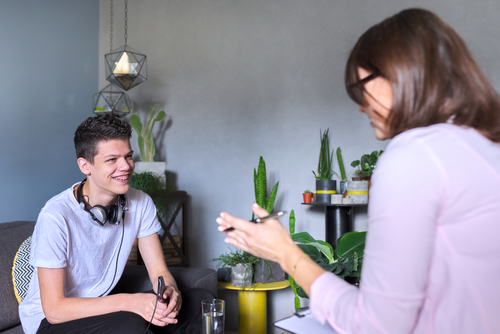Dialectical behavior therapy (DBT) was developed by Marsha M. Linehan in the late 1980s, as a means to more effectively treat chronically suicidal individuals diagnosed with borderline personality disorder (BPD). It is an evidence-based psychotherapy that is founded on the principles of cognitive-behavioral therapy (CBT) and blends concepts derived from Buddhist meditative practice such as awareness, mindfulness, and attentiveness to current situations and emotional experiences to encourage acceptance. DBT emphasizes the psychosocial aspect of treatment. In addition to DBT being recognized as the gold standard method of treatment for BPD it has also become known as an effective treatment method for other mental health conditions (e.g., bulimia, binge-eating disorder, substance use disorder, depression, bipolar disorder, attention-deficit hyperactivity disorder, etc.). When used to treat adolescents, DBT is primarily used with those who struggle with emotional dysregulation, also known as severe emotional instability (e.g., suicidal thoughts, self-harming behaviors, etc.). There are many DBT providers located in Southern California that specialize in treating adolescents.
DBT Basics
DBT has a multifaceted, rigidly structured therapeutic approach that is comprised of weekly one-on-one psychotherapy sessions, weekly DBT skills training group sessions, and as-needed phone coaching. Each therapeutic setting has its own structure and goals. The DBT skills training group sessions focus on teaching and practicing the four modules of DBT, which are: core mindfulness (focusing skills), distress tolerance (crisis survival skills), emotional regulation (de-escalation skills), and interpersonal effectiveness (social/ relationship skills). The entire DBT program typically lasts about six months long, as six weeks are allocated to focusing on each of the four DBT skills modules.
DBT Skills Manuals and Workbooks For Adolescents
Dialectical behavioral therapy is designed to help adolescents learn to regulate their emotions and behaviors. There are a variety of published DBT manuals and workbooks that cater to the adolescent population. Commonly used DBT adolescent workbooks and manuals include, but are not limited to the following:
- DBT Skills Manual for Adolescents by Jill H. Rathus and Alec L. Miller
- Dialectical Behavior Therapy Skills Training with Adolescents: A Practical Workbook for Therapists, Teens & Parents by Jean Eich
- Put Your Feelings Here: A Creative DBT Journal for Teens with Intense Emotions (The Instant Help Guided Journal for Teens Series) by Lisa M. Schab
- DBT Skills Training Handouts and Worksheets, Second Edition by Marsha M. Linehan
- Don’t Let Your Emotions Run Your Life for Teens: Dialectical Behavior Therapy Skills for Helping You Manage Mood Swings, Control Angry Outbursts, and Get Along With Others by Sheri Van Dijk
- The DBT Skills Workbook for Teen Self-Harm: Practical Tools to Help You Manage Emotions and Overcome Self-Harming Behaviors by Sheri Van Dijk
DBT manuals and workbooks for adolescents are both widely available and easily accessible. New DBT workbooks with additional resources, exercises, and worksheets continue to be published regularly.
The information above is provided for the use of informational purposes only. The above content is not to be substituted for professional advice, diagnosis, or treatment, as in no way is it intended as an attempt to practice medicine, give specific medical advice, including, without limitation, advice concerning the topic of mental health. As such, please do not use any material provided above to disregard professional advice or delay seeking treatment.


